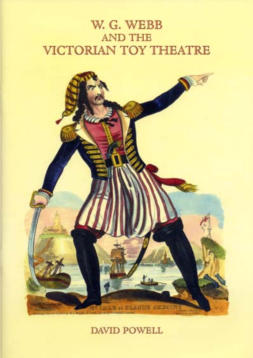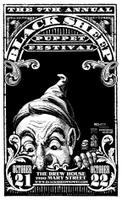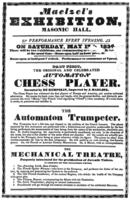 Great Small Works Interview
Great Small Works Interview
Interviewee: John Bell
Date: 09/11/2005
- Interest in Toy Theatre
grew out of their background in puppetry, as well as their influences...
- "Political Theatre is O.K." : John sees Toy Theatre as a means to express political statements or ideas - "Toy theater is a fast, cheap, way of responding to mass- produced images and mass media, with flat cut-out tabletop figures on a proscenium stage. We have used the form to create
The Toy Theater of Terror as Usual - a series of shows inspired by
Walter Benjamin,
Michael Taussig,
John Heartfield,
Jane Geiser and
Edward Gordon Craig - which re-fashions images of mass-media news and entertainment into episodes of a toy theater epic commenting on the politics and culture of our time."
- In 2005, received Jim Henson Award for Innovation:
JIM HENSON AWARD FOR INNOVATION recognizes innovation in puppetry that is technological, dramaturgical or collaborative in nature - Great Small Works is a puppet company created by a collaborative of extraordinary puppet artists from different backgrounds in New York City. They have worked steadily for years to make the art form of Toy Theatre something innovative and relevant to the world today. Toy theaters became popular in the early 19th century, as cardboard replicas of actual stages. The miniature, two-dimensional, mass-produced theaters became popular entertainment. Great Small has been successful in attracting many new devotees and inspired many puppeteers to experiment with the form. Their annual Toy Theatre Festival is a “must see” event for puppeteers and the public. Since 1993, at seven festivals, hundreds of artists from around the world (Jerusalem, Mexico City, Toronto,) around the county (California, Illinois, Vermont) and around New York, converge at a New York location for a ten-day celebration of the power of the miniature. The 7th festival held in 2005 was held in Brooklyn at St Ann’s Warehouse. Working with guest artists, they reinvent the nearly extinct tradition of Toy Theater for contemporary audiences. The venue is reconfigured to house small-scale performance spaces where dramatic spectacles unfold, often simultaneously, alongside a grand toy theater exhibition! - From
http://www.puppeteers.org/awards.html- GSW works with schools, jails, and other community groups holding threatre
workshops, which includes the use of toy theatre...
- Contemporary design and production of new toy theatre are being done by:
Jon Bankert;
Robert Poulter;
Alain LeCucq; Jane Geiser;
Susan Simpson, and
Blair Thomas- In early
GSW festivals, they spread the word among the puppet and theatre community there was a 'revival' in Toy Theatre; actually, there wasn't...yet - there is now, partially due to their proactive efforts. Part of the annual festival is the 'Temporary Toy Theatre Museum', an exhibit that is never meant to be permanent; it is exhibited to showcase what toy theatre was, is, and can be into the future...















